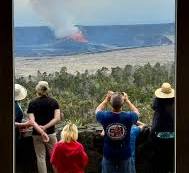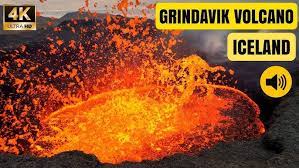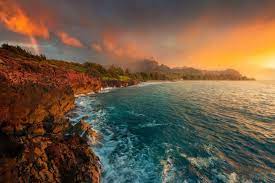Discover the Historic Charm of Volcano House in Hawaii

Exploring the Magnificent Volcano House in Hawaii
Nestled within the breathtaking landscapes of Hawaii Volcanoes National Park, the historic Volcano House stands as a testament to the raw power and beauty of nature. Perched on the rim of Kilauea Caldera, this iconic hotel offers visitors a unique opportunity to witness the majesty of an active volcano up close.
Originally built in 1846, the Volcano House has welcomed travelers from around the world for generations. Its rustic charm and unparalleled views make it a favorite destination for those seeking an unforgettable Hawaiian experience. Guests can relax on the lanai and watch as plumes of steam rise from Halema’uma’u Crater, or explore the nearby hiking trails that wind through ancient lava fields.
For those looking to delve deeper into the history and geology of the area, guided tours are available to explore the surrounding volcanic landscape. Visitors can learn about the cultural significance of volcanoes in Hawaiian mythology and gain insight into the ongoing geological processes that shape this dynamic region.
After a day of exploration, guests can unwind in one of the cozy rooms at Volcano House, each offering stunning views of Kilauea Caldera or lush rainforest. The hotel’s dining options feature locally sourced ingredients and traditional Hawaiian dishes, providing a true taste of island life.
Whether you’re a nature enthusiast, history buff, or simply seeking a peaceful retreat surrounded by natural beauty, a visit to Volcano House in Hawaii is sure to leave you with memories that will last a lifetime.
Top 9 FAQs About Staying at Volcano House in Hawaii
- How many homes are lost in Hawaii Volcano?
- How much does it cost to stay at Volcano House?
- Is there a house inside the volcano in Hawaii?
- Who owns the Volcano House in Hawaii?
- Can you see the lava from Volcano House?
- Does Volcano House have a restaurant?
- Is it worth staying at Volcano House?
- What is the volcano house in Hawaii?
- Who were the famous guests at the Volcano House?
How many homes are lost in Hawaii Volcano?
The impact of volcanic activity in Hawaii has been significant over the years, leading to the loss of several homes in the vicinity of active volcanoes. The exact number of homes lost due to volcanic eruptions in Hawaii varies depending on the specific event and its severity. The volcanic activity, particularly around Kilauea Volcano, has resulted in the destruction of homes and infrastructure, displacing residents and reshaping the landscape. Efforts are ongoing to monitor and mitigate the risks posed by volcanic activity in Hawaii to protect both residents and visitors to the region.
How much does it cost to stay at Volcano House?
The cost of staying at Volcano House in Hawaii varies depending on the type of room, season, and any special packages or promotions that may be available. Room rates typically start at [insert starting price here] per night for standard accommodations, with higher rates for premium rooms or suites with panoramic views of Kilauea Caldera. It is recommended to check the official website of Volcano House or contact their reservations team directly for the most up-to-date pricing information and any current deals that may be offered to make your stay at this iconic destination a memorable one.
Is there a house inside the volcano in Hawaii?
The Volcano House in Hawaii is not actually located inside a volcano. Instead, it is situated on the rim of Kilauea Caldera, offering stunning views of the volcanic landscape. While the name may suggest otherwise, the Volcano House is a historic hotel that provides guests with a unique vantage point to observe the volcanic activity in Hawaii Volcanoes National Park. Visitors can witness the awe-inspiring beauty of an active volcano from a safe distance while enjoying the comfort and hospitality of this iconic establishment.
Who owns the Volcano House in Hawaii?
The iconic Volcano House in Hawaii is currently owned and operated by the National Park Service as part of Hawaii Volcanoes National Park. With a rich history dating back to 1846, the Volcano House has been an integral part of the park’s landscape, offering visitors a unique opportunity to experience the wonders of Kilauea Caldera and its surrounding volcanic features. As a historic landmark and popular destination for travelers, the Volcano House continues to be cherished and preserved under the stewardship of the National Park Service.
Can you see the lava from Volcano House?
One of the most frequently asked questions about Volcano House in Hawaii is whether visitors can see the lava from the hotel. While the possibility of viewing flowing lava from the property varies depending on volcanic activity, guests have been known to witness spectacular displays of lava from the comfort of Volcano House. The hotel’s prime location on the rim of Kilauea Caldera offers a unique vantage point for observing volcanic activity, making it an ideal destination for those hoping to catch a glimpse of one of nature’s most awe-inspiring phenomena.
Does Volcano House have a restaurant?
Yes, Volcano House in Hawaii does have a restaurant. The hotel’s dining options feature locally sourced ingredients and traditional Hawaiian dishes, providing guests with a true taste of island life. Whether you’re looking to enjoy a leisurely meal with panoramic views of Kilauea Caldera or simply grab a quick bite to eat after a day of exploring the volcanic landscape, the restaurant at Volcano House offers a unique dining experience that complements the natural beauty of its surroundings.
Is it worth staying at Volcano House?
When considering whether it is worth staying at Volcano House in Hawaii, the answer lies in the unparalleled experience it offers. Perched on the rim of Kilauea Caldera within Hawaii Volcanoes National Park, Volcano House provides guests with a unique opportunity to witness the raw power and beauty of an active volcano up close. The historic charm of the hotel, coupled with its stunning views and proximity to hiking trails and cultural sites, make it a truly memorable destination for those seeking an authentic Hawaiian experience. Staying at Volcano House allows guests to immerse themselves in the rich history and natural wonders of the area, making it a worthwhile choice for travelers looking to connect with the spirit of Hawaii.
What is the volcano house in Hawaii?
The Volcano House in Hawaii is a historic hotel located within the stunning landscapes of Hawaii Volcanoes National Park. Perched on the rim of Kilauea Caldera, this iconic establishment offers visitors a unique opportunity to witness the magnificence of an active volcano up close. Originally built in 1846, the Volcano House has been a beloved destination for travelers seeking an authentic Hawaiian experience. With its rustic charm, unparalleled views, and rich history, the Volcano House continues to captivate guests from around the world, making it a must-visit destination for those exploring the wonders of Hawaii.
Who were the famous guests at the Volcano House?
The historic Volcano House in Hawaii has welcomed a diverse array of famous guests over the years. From renowned authors and artists seeking inspiration from the volcanic landscapes to political figures and celebrities looking to experience the awe-inspiring power of Kilauea Caldera, the hotel has hosted a variety of notable individuals. Some of the famous guests who have graced the halls of Volcano House include Mark Twain, Queen Liliuokalani, President Franklin D. Roosevelt, and Isabella Bird. Their visits have contributed to the rich tapestry of history and culture that surrounds this iconic destination in Hawaii Volcanoes National Park.

